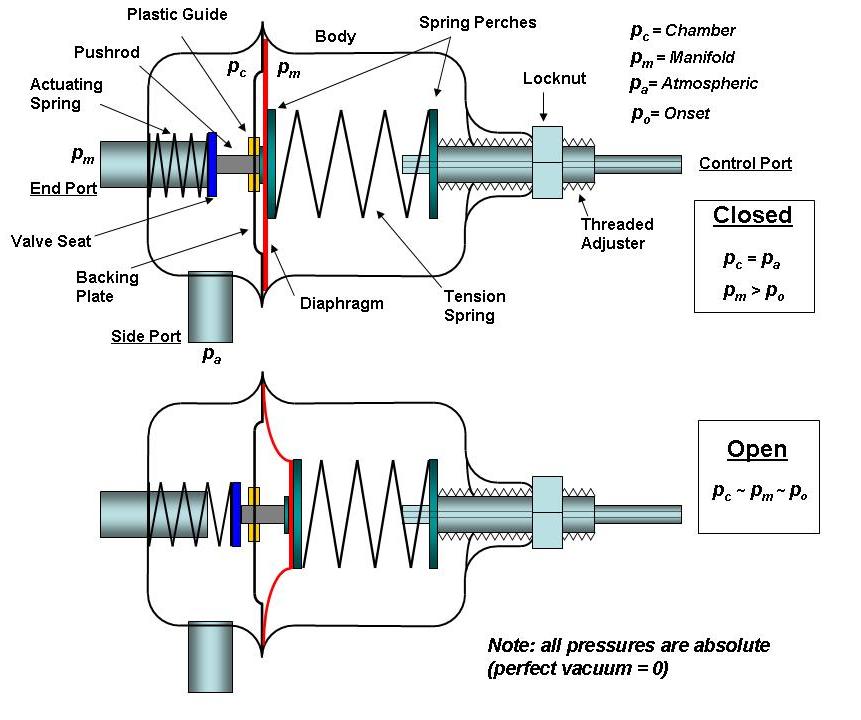|
|

|
Porsche, and the Porsche crest are registered trademarks of Dr. Ing. h.c. F. Porsche AG.
This site is not affiliated with Porsche in any way. Its only purpose is to provide an online forum for car enthusiasts. All other trademarks are property of their respective owners. |
|
|
  |
| pbanders |
 Oct 22 2016, 09:17 PM Oct 22 2016, 09:17 PM
Post
#1
|
|
Senior Member    Group: Members Posts: 943 Joined: 11-June 03 From: Phoenix, AZ Member No.: 805 |
This stuff is on my D-Jet page, but a reminder. Pertinent parts iare bolded.
There are a number of references out there, including the Porsche 914 Factory Workshop Manual, that have some diagrams that show the vacuum limiter ("decel valve") incorrectly connected. Below is a diagram of the internals of this valve:  The valve limits the manifold pressure (pm) to the onset pressure (po) where the valve opens. When the pm drops to po, the pressure differential across the diaphragm is sufficient to overcome the resultant force between the tension and actuating springs, pushing the valve seat off of the end port, opening the valve, allowing air at atmospheric pressure (pa) to flow into the intake manifold, which limits pm to po. If pm tries to drop further (e.g. higher engine speed, greater pumping), the pressure differential increases, the valve opens further, more air flows into the manifold, which prevents pm from exceeding po. If you hook the valve up with the control port connected to the manifold, the side port connected to the manifold, and the end port connected to the air box, then the decel valve won't work. Why? Because you're applying the same pressure to both chambers, which means there's no pressure differential across the diaphragm, so it never moves to open the valve. If instead, you connect the manifold vacuum to the end port and the air box to the side port, then when you reach the vacuum level where the force on the diaphragm due to the pressure differential is high enough to overcome the spring tension, then the valve will open. Note that a small area where the seat of the "end" port is against the diaphragm is also under vacuum, but it's much smaller than the area of diaphragm that's under vacuum on the control side, so its influence is small. Once the valve opens, it effectively limits the manifold vacuum to the set point level by opening more or less in response to the pumping volume changes due to engine speed. |
| MikeInMunich |
 Oct 23 2016, 12:35 PM Oct 23 2016, 12:35 PM
Post
#2
|
|
Member   Group: Members Posts: 392 Joined: 19-November 13 From: Munich, Germany Member No.: 16,674 Region Association: None |
Wow. That was a mouthful. (IMG:style_emoticons/default/blink.gif)
|
  |
1 User(s) are reading this topic (1 Guests and 0 Anonymous Users)
0 Members:

|
Lo-Fi Version | Time is now: 9th July 2025 - 08:24 AM |
Invision Power Board
v9.1.4 © 2025 IPS, Inc.







